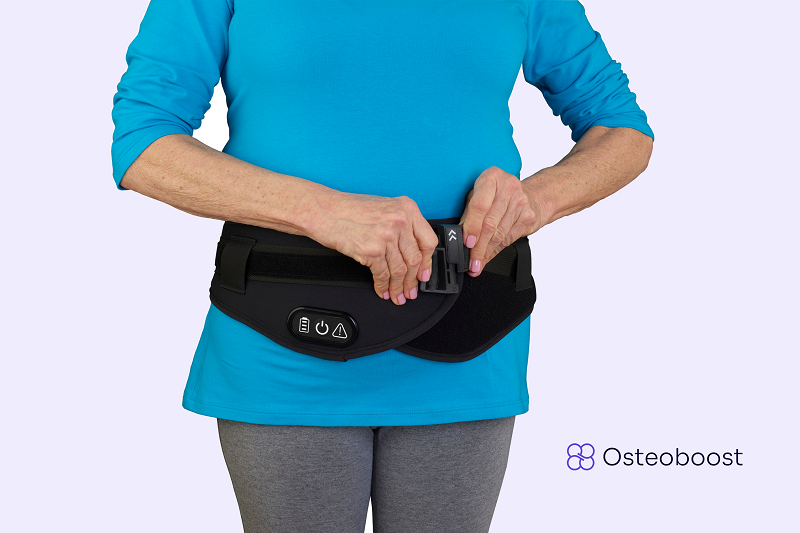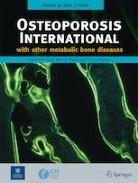|

The International Society for Clinical Densitometry (ISCD) Conference on Skeletal Health Assessment
February 20 – 22, 2025
Hilton Boston Park Plaza Hotel
The International Society for Clinical Densitometry (ISCD) is pleased to announce that their 2025 ISCD Conference on Skeletal Heath Assessment (formerly known as Annual Meeting) will be held February 20 -22 in Boston, MA, USA. Conference registration is now open and early registration rates are available through January 16, 2025. Hotel rates have been negotiated at the Hilton Boston Park Plaza Hotel for all attendees. ISCD will offer a number of live educational courses in advance of and immediately following the conference at the same venue.
ISCD’s conference will be offered as a single-track program which appeals to both clinicians and technologists. The program is designed to deliver the most current, clinically relevant, and evidence-based information on skeletal health assessment, as well as the prevention, diagnosis, and treatment of osteoporosis and fracture risk. Learners will improve competency in the research, prevention, diagnosis, treatment, and advances in bone densitometry and osteoporosis. Learn more on the event website.
Postmenopausal Osteoporosis: Closing the Care Gap
Are you up to date on how to prevent or reduce secondary osteoporotic fracture rates in your patients?
Authors: Tara M. Knight, DNPc, MSN, BSN, FNP-C
1.0 CME / ABIM MOC / CE
Please click here to begin the course.
Osteoboost: A Novel FDA-Cleared Device for the Prevention of Bone Loss

Osteoboost is the first non-drug, prescription therapy for postmenopausal women with osteopenia. This precision vibration therapy device, validated by a rigorous randomized controlled trial, provides a low-risk approach that supports your patient’s current treatment plan. In a randomized, double-blinded clinical trial conducted at the University of Nebraska Medical Center, Osteoboost reduced the loss of bone density in the spine by 85% and loss of bone strength in the spine by 83%. Read the white paper.
Osteoboost is a wearable device, worn around the hips, that delivers personalized and targeted vibration therapy designed to mimic the mechanical benefits of high-impact exercise—stimulating bone health in a safe, accessible way. The intelligent system ensures a therapeutic dose of vibration energy is delivered to the hips and lumbar spine in daily 30-minute treatments. Patients can use Osteoboost at home or on a walk with friends, making it easy to integrate into their daily routine. Osteoboost complements exercise, nutrition, and other medical and lifestyle interventions, helping to reinforce a holistic approach to bone health.
Osteoboost gives medical providers a clinically proven option for patients, without risk of serious side effects. It addresses a critical gap in patient care, empowering you and your patients to manage bone health safely and effectively. Visit the website for more information.
NASA Integrates Echolight Devices for Bone Health Monitoring in Spaceflight Simulations
NASA has now equipped itself with Echolight devices to enhance bone health monitoring during spaceflight simulations. These advanced tools will allow NASA researchers to assess and track bone density and bone quality without the use of ionizing radiation, a crucial factor for astronauts who are at high risk of bone loss due to microgravity conditions.
The Echolight technology provides precise and real-time bone health assessments, supporting efforts to protect the skeletal health of astronauts during long-duration missions. This development underscores the importance of cutting-edge bone health monitoring for both space exploration and the advancement of osteoporosis care on Earth.
Read more about this exciting innovation here.
New Study Highlights Effectiveness of Osteoporosis Treatment in Reducing Hip Fracture Risk for Both Women and Men
An NIH-funded study published in JBMR utilized VirtuOst BCT technology on patients within the Kaiser Permanente Southern California system, leveraging medical record data to examine the risk of a first hip fracture associated with osteoporosis drug treatment compared to no treatment in individuals with established osteoporosis.
Read the full study here.
Bone Health and HIV: What You Need to Know
People living with HIV experience bone loss, weakened bones and broken bones more often than the general population. We offer a variety of educational programs to help you, whether you are living with HIV or helping clients or patients living with HIV.
Bone Health & HIV Health Educator Training Course: This continuing education activity is intended for use by health professionals who participate in the care of patients at risk for or suffering from HIV, in the areas of primary care, endocrinology, geriatrics, gynecology, internal medicine, obstetrics, orthopedics, osteopathy, pediatrics, physiatry, radiology, rheumatology and physical therapy. This includes case managers, physicians, nurse practitioners, registered nurses, pharmacists, physician assistants, technologists, researchers, public health professionals and health educators with an interest in osteoporosis and bone health. Click here to learn more and sign up.
New Medicare Advantage Coverage for Prolia®
Effective May 1, 2024, Prolia® (denosumab) has been added as a preferred therapy to Humana’s Medicare Advantage plans. Additionally, Humana has removed the zoledronic acid step from both their Coverage Policy and Step Therapy List for Medicare Advantage plans under the medical benefit.
For full prescribing information, including the Boxed Warning and Medication Guide, please visit:
Prolia® REMS
A REMS (Risk Evaluation and Mitigation Strategy) is a program required by the Food and Drug Administration to manage known or potential serious risks associated with a drug product.
The purpose of the Prolia® REMS is to inform healthcare providers and patients about the following serious risk of:
- Severe Hypocalcemia in Patients with Advanced Kidney Disease
The Prolia® REMS program materials are designed to inform healthcare providers and patients about this risk with Prolia®. The Prolia® REMS program materials include a REMS Letter for Healthcare Providers and a Patient Guide. It is important that you discuss with each patient the information included in the Patient Guide.
Materials for Healthcare Providers
REMS Letter for Healthcare Providers
Patient Guide
Prescribing Information
Materials for Patients
Patient Guide
US Pharmacopeia (USP)
“Choosing for Quality: Dietary Supplements”, a publication of the USP Convention, provides pharmacists with useful information regarding quality considerations for dietary supplements that you can pass along to consumers.
Capture the Fracture® Best Practice Framework (BPF)
The International Osteoporosis Foundation (IOF) has developed Capture the Fracture®, a global program to facilitate the implementation of Post-Fracture Care (PFC) Coordination Programs, such as Fracture Liaison Services (FLS) for secondary fracture prevention.
The Capture the Fracture® initiative guides healthcare systems in implementing their own FLS, and provides a platform for the global exchange of existing projects and resources on FLS and local implementation strategies.
The Best Practice Framework (BPF) serves as the measurement tool for IOF to award ‘Capture the Fracture Best Practice Recognition’ in celebration of successful FLS worldwide. Applicants will be featured on the CTF’s interactive map, and will be awarded the Capture the Fracture Best Practice Recognition logo.
Please click here to complete the application for Best Practice Recognition.

Insulin resistance, bone health, and fracture risk
Ferah Armutcu & Eugene McCloskey
Summary
Insulin resistance, defined as an impaired biological response to insulin stimulation in target tissues, arises most frequently in the presence of central obesity. Although obesity is generally associated with increased bone mass, recent data challenge this view and, if complicated by T2DM, obese patients are at high risk for fragility fractures. IR may play a key role in this increased fracture risk through effects on bone quality rather than bone quantity. Further understanding of the mechanisms and approaches to prevent osteoporotic fractures in IR-related diseases is needed.
Risk factors associated with 1-year mortality after osteoporotic hip fracture in Hawaiʻi: higher mortality risk among Native Hawaiians and other Pacific Islanders
Luke Taylor, Masako Matsunaga, Hyeong Jun Ahn, Andrea M. Siu & Sian Yik Lim
Summary
We studied factors affecting osteoporotic hip fracture mortality in Hawaiʻi, a region with unique geography and racial composition. Men, older adults, higher ASA score, lower BMI, and NHPI race were associated with higher mortality. This is the first study demonstrating increased mortality risk after hip fracture in NHPI patients.
Among people on osteoporosis medication, loss of appendicular or total body lean mass is an independent risk factor for hip and major osteoporotic fractures
Lora M. Giangregorio, Mackenzie Ryann Alexiuk, Navdeep Tangri, Clara Bohm & William D. Leslie
Summary
People with prior lean mass loss had a ~10% higher risk of MOF and ~22–26% higher risk of hip fracture, and the results were similar in people on anti-osteoporosis medications. Loss of lean mass is associated with increased fracture risk. Patients should be encouraged to pursue strategies to prevent loss of lean mass
Efficacy and safety of candidate biosimilar CT-P41 versus reference denosumab: a double-blind, randomized, active-controlled, Phase 3 trial in postmenopausal women with osteoporosis
Jean-Yves Reginster, Edward Czerwinski, Krzysztof Wilk, Przemysław Borowy, Anna Strzelecka, Tomasz Budlewski, Monika Janowska-Maus, Krzysztof Szymanowski, Joanna Kwiatek, Svitlana Postol, Airi Põder, Jerzy Supronik, SungHyun Kim, JeeHye Suh, NooRi Han, NaHyun Kim, SeoHee Bae & Stuart L. Silverman
Summary
This 78-week (18-month) study conducted in 479 postmenopausal women with osteoporosis evaluated the efficacy, pharmacodynamics, pharmacokinetics, safety, and immunogenicity of candidate biosimilar CT-P41 relative to US reference denosumab. CT-P41 had equivalent efficacy and pharmacodynamics to US-denosumab, with similar pharmacokinetics and comparable safety and immunogenicity profiles.
Association of standardized serum 25-hydroxyvitamin D with falls in post-menopausal women
Neil Binkley, Christopher T. Sempos, Gretta Borchardt, Jennifer Larsen, Mark L. Stacey, Samuel Mosiman & Joan M. Lappe
Summary
Vitamin D status has long been related to falls risk. In this planned secondary analysis of a vitamin supplementation trial in postmenopausal women, standardized 25-hydroxyvitamin D concentration up to 60 ng/mL was not associated with increased falls. Women with 25(OH)D ≥ 60 ng/mL had higher odds of ≥ 2 falls.
Real-world rates and risk factors for subsequent treatment with vertebroplasty or balloon kyphoplasty after initial vertebral augmentation: a retrospective cohort study
Joshua A. Hirsch, Christopher Gilligan, Ronil V. Chandra, Allan Brook, Nicolas C. Gasquet, Christine N. Ricker & Charlotte Wu
Summary
The purpose of this study was to determine the real-world incidence and predictors of additional vertebroplasty or balloon kyphoplasty after initial vertebral augmentation, as a proxy for subsequent symptomatic vertebral fracture. Of patients, 15.5% underwent subsequent vertebral augmentation. The patient’s comorbidities are strongly associated with risk of subsequent treatment.
One versus 2 years of alendronate following denosumab: the CARD extension
Joy N. Tsai, Mackenzie Jordan, Hang Lee & Benjamin Z. Leder
Summary
When denosumab is discontinued, antiresorptive therapy is critical to reduce high-turnover bone loss. The ideal duration of antiresorptive therapy after denosumab is uncertain. This study demonstrates that both 1 and 2 years of alendronate maintained bone density gains achieved with 1 year of denosumab.
|